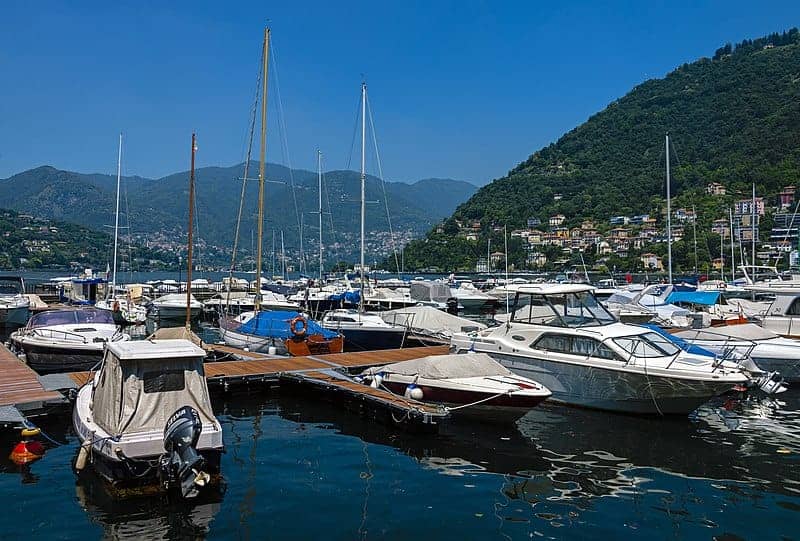
Let’s look at the type of boats that are available and see which best suits you. Boats come in so many forms for so many different applications. So, what are the types of boats?
- Pontoon
- Bowrider
- Freshwater Fishing
- Saltwater Fishing
- Runabout
- Watersport
- Cruiser
- Catamaran
- Speed Boat
Whether you are just beginning your journey in boating, still trying to figure out feel out the ropes, or a veteran boater who checks out all the newest trends, and products, you know it can be overwhelming to sometimes find the ideal boat for you and your family. Saltwater excursions, freshwater lakes, how do you combine all that you want to explore into just the right boat? Well, let’s start this journey by breaking the boats into the different styles/classes and we will explore some of the most popular.
PONTOON BOATS
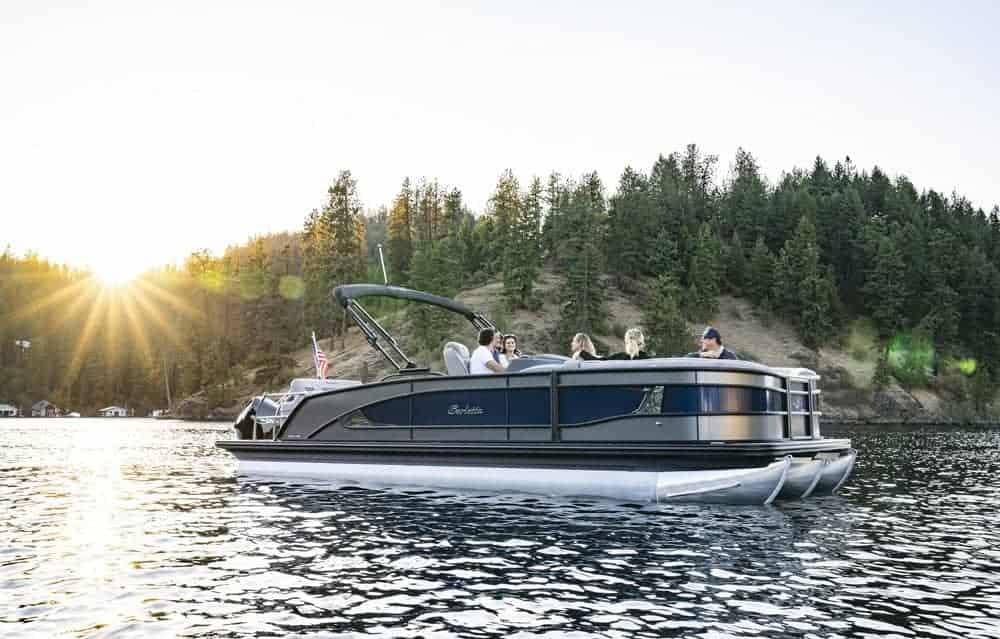
Insert Image and Caption brand – Model
If you have been near the lake or intercoastal waterway recently you probably have seen plenty of pontoon boats about. These boats are great family, friend, and entertaining boats, and instead of a fiberglass hull, these boats have two or sometimes three aluminum “logs” pontoons. Many years ago they were considered very slow and clunky, rather ugly, and not very seaworthy, but these are all problems of the past. Today, pontoon boats can be fast, slick-looking, and shockingly comfortable to ride on. They come with many seat layouts depending on if you are looking to lunge or fish.
Pontoons are great for lakes, and intercoastal close-to-shore excursions, as they are not the best for larger open bodies of water that are susceptible to strong winds, or larger waves. However, pontoon boats are very extremely stable, they have very large deck space, and their modular nature means you can choose from endless seating arrangements and even add things like wet bars, towing arches, and Bimini tops, great to be out in the sun, entertain, listening to music and hanging out with family, friends, and even pets. If you are thinking about a pontoon boat you may want to check out all the advantages of a Pontoon boat here.
Tritoon vs. Pontoon | What Kind of Pontoon Should You Buy?
The only real difference between a tritoon and a pontoon is the number of tubes that comprise the boat’s hull: a pontoon has two tubes, while a tritoon has three, however performance of the pontoon is very different on a pontoon vs a tritoon.
In this article we explore in depth the differences of a Tritoon and – Are TRITOONS better than PONTOONS?
Newer, and faster pontoon boats are often equipped with three tubes. These three-tube pontoons offer better balance and weight distribution, and can handle more powerful engines that make for a more stable ride, but are they worth the extra cost?
The short answer: Boaters who simply want to enjoy an easy cruise on calm waters will have a great time on a two-tube pontoon. Those who crave more spirited cruising speeds or want more control in choppy waters, however, will tend to favor a three-tube option.
Three-tube pontoons are very stable and typically have bigger engines with more horsepower when compared to traditional two-tube pontoons. The additional buoyancy and better weight distribution created by the third tube allows for more people, more entertainment options and better handling at higher speeds.
Choppy waters can sometimes leave two-tube pontoon boaters with wet passengers. Three-tube pontoons will maneuver more comfortably and safely through rough waters. With the added engine power capabilities, three-tube pontoons can be equipped with special ski towing bars at the back of the boat for those who like to get wet and wild.
If entertaining is more par for the course, a three-tube pontoon boat’s larger capacity can fit up to 10 people or more, with room for cooking appliances and other additions.
Considerations for Three-Tube Pontoon Boats
Before purchasing a new three-tube pontoon, there are a few factors to consider to ensure fun, safe, and memorable trips to the water:
· A larger trailer might be required. Due to the larger size of a three-tube pontoon boat, a larger trailer is usually required to support the middle tube as well as the longer hull.
· Handling and maneuverability are different. If you are upgrading to a larger three-tube pontoon from a two-tube pontoon, you’ll notice a difference in the handling, three-tube pontoons offer boat owners a wider range of activities while on the water, a more stable ride and a little more speed than a traditional two-tube pontoon.
BOWRIDER BOATS
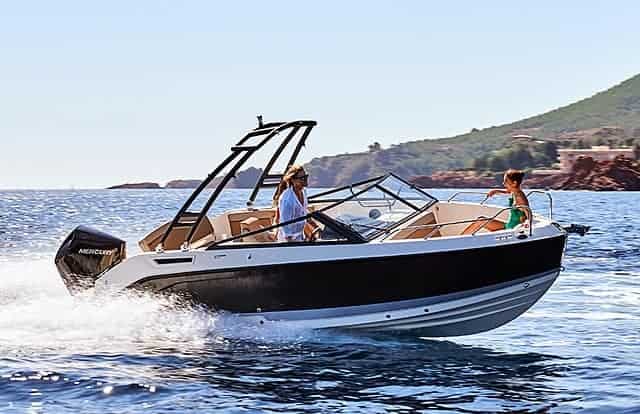
Bowriders are one of the most popular types of boats on the water. They can be used for everything from simple day-tripping to water skiing. And while in the past bowriders were limited in size and scope, recently there has been a push towards larger and larger models, often with accommodations ranging from enclosed heads to full-blown cabins.
The classic bowrider styles range in length from 18’ to 26’. The smaller ones a far less expensive than the bigger versions, yet they still enable a family to enjoy a long list of waterborne activities. Most are powered by stern drives, or plenty of outboard options as well. Due to the latest emissions regulations, the cost of stern drives has gone up causing the costs to be very similar between stern drive vs outboard engines.
What’s the downside of choosing a bowrider boat? While bowriders are good for a lot of different activities, they aren’t absolutely ideal for all activities. The vast majority of bowriders are relatively unprotected boats and are only meant for use in good weather.
FRESHWATER FISHING BOATS
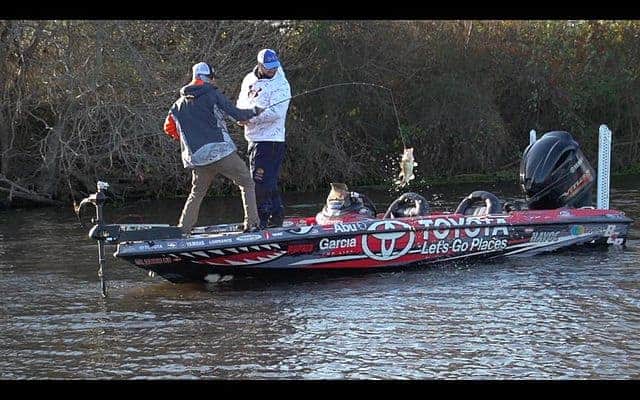
No matter if you live near a lake or river, wanting to go casting for bass, or trolling the lake for trout, a freshwater fishing boat is a must-have. There are numerous variations and specialized boats, including species-specific boats. We will look at main three main choices that are available: bass boats, multi-species boats, and aluminum fishing boats.
Bass Boats
These are highly specialized boats with only one mission in mind: catching largemouth bass. To accomplish this goal, they are lightning-fast, equipped with accessories like bow-mounted electric trolling motors and high-tech fish finders, and they have live wells that keep the catch until it’s time for weigh-ins at the tournament dock. These specialty boats do carry a cost, compared to boats the same length, bass boats tend to be some of the most expensive freshwater fishing boats around. Since they’re so specialized, they also aren’t ideal for many other forms of fishing, or for open waters.
Center Consoles
Center Console Boats are the most popular style of boat due to their versatility. These can be used not only on freshwater lakes but also in coastal waterways. Because of their big appeal, they come in a very wide range of options. Some have open-side consoles, some have tall protective windshields at the helm, and some even have center consoles. If fishing is king these are a must-have boat, most Center Console Boats have live wells, rod boxes, pedestal-mounted seats, and other fishing features that help you get those fish out of the lake, and into the frying pan. The vast majority are powered by outboards and are appropriate for use on a wide variety of waterways.
Is there a negative to Center Console Boats?
The main negative complaint is the Hardtop. It is great for shade, but will not fit in most garages, and careful out on the water encountering bridges. The Center Console Hardtop cannot be folded down, therefor no allowing you to pass the low clearance.
Aluminum Fishing Boats
Another very popular boat for inland freshwater lakes and streams are the simple aluminum Jon boats. While there are certainly lots of fishing boats out there, one thing about the all-aluminum fishing boats is their significant price advantage. Some, which come brand new, for under $15,000, you may be surprised at how affordable they really are. No, most don’t look quite as nice as fiberglass boats and have much less horsepower and equipment. It’s also true that some ride rather rough, but aluminum has several other advantages too, such as less upkeep and worry about damaging the bottom compared to fiberglass boats.
SALTWATER FISHING BOATS
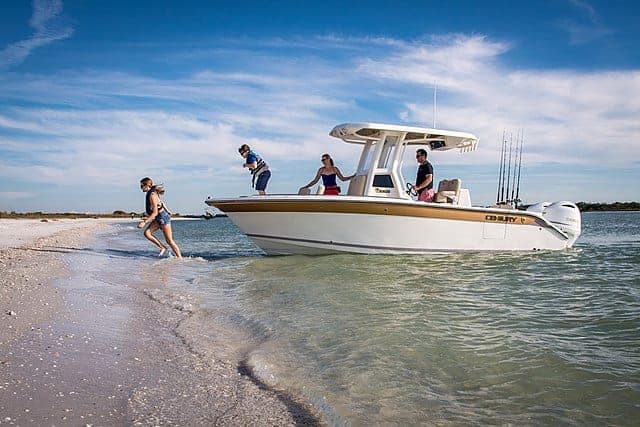
Saltwater Fishing Boats, if you like to get up before sunrise and head out to search for mangroves, fish for redfish and snook, ply the tides for striped bass or run offshore in search, of grouper, tunas, and marlin, then there is nothing like a saltwater fishing boat for you. We will look at 4 of the most popular Saltwater Fishing boat styles:
Bay Boats
These, shallow draft boats are designed to play along inshore waters. All bay boats are also center consoles and are powered by outboards, some with bay boat towers, which can give you a better view. Most don’t offer much in the way of features for comfort, but some do have heads in the console, or snap-in cushions that turn the casting deck into a sun pad. The Bay Boat will allow you to get into shallow areas most others can’t.
Center Consoles
These are the most popular saltwater fishing boats, period, and you’ll find them ranging from 17 feet all the way up to the world’s largest center console, at 53 feet. Like bay boats, a lack of creature comfort features is a common complaint on center consoles, but many manufacturers make versions of their fishing boats that are quite comfy these days, some even now have a bow with luxury seating and a small kitchen with an optional built-in electric grill. It is the ultimate play toy for all your Saltwater adventures, from fishing to cruising and island hopping.
Convertibles
Offshore anglers who want the comfort of a big cabin often opt for a convertible. These boats are usually inboards, but their most significant defining features are large cockpits and tall flying bridges. Inside they’re often very luxurious, especially on big boats but even the smallest sportfishing convertibles, are comfortable inside.
Walkarounds
Smaller fishing boats with cabins that have side decks around the topsides are called walkarounds. They’re a good compromise for many boaters who want to have a cabin but also want to utilize some of the bow area to use for fishing space.
RUNABOUT BOATS
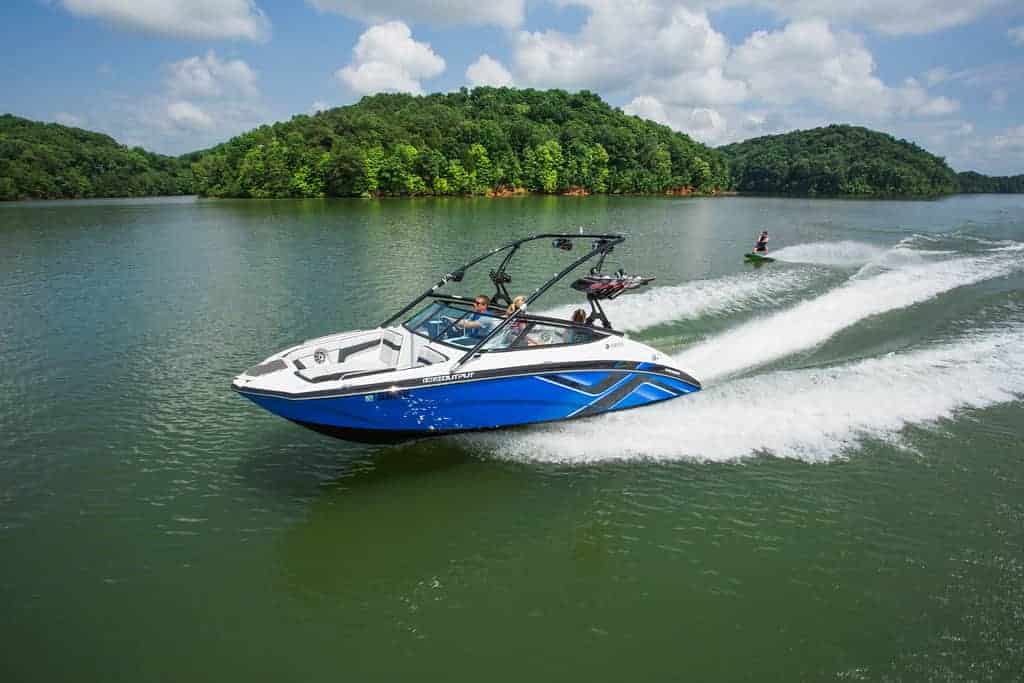
The term “runabout” is really a catch-all grouping that includes everything from bowriders to combination ski-and-fish boats to small speed boats. The thing these boats all have in common is that they’re small, open-bow boats intended for day use in fair weather conditions. While one is exposed to nature, and they have a possibility for a small Bimini top, which exposes you to rain and sun, you are on the water to enjoy the sun, water, and maybe even an island.
WATERSPORTS BOATS
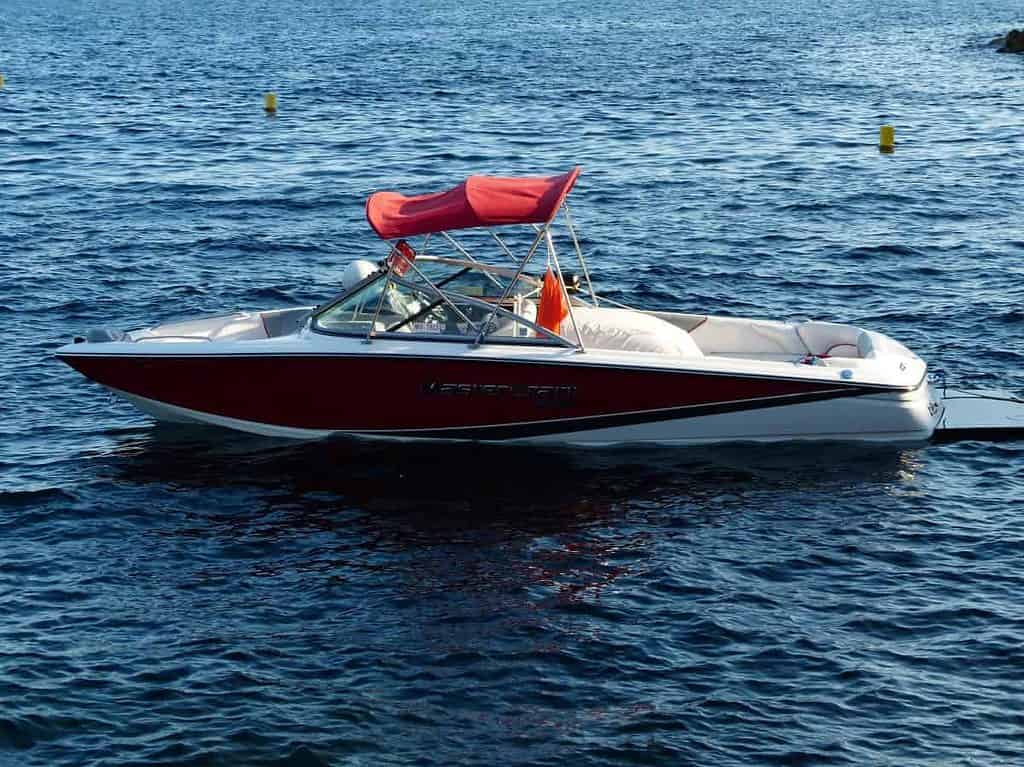
Wakeboarding, water skiing, and the ever-growing wake surfing are all enjoyed behind a watersports boat. These boars are also known as “tow boats,” this type of boat has a towing hook, either in the middle or on top of a tower, which is often elevated on the boat to give the rider a better pull. Some models can be outfitted with special trim tabs and water ballast tanks that let you create bigger wave sizes and even “shape” wakes for better surfing and wakeboarding.
Watersports boats usually have either inboard V-drive or stern-drive power, but inboards are commonly preferred, as it keeps the prop under the boat for a slight safety advantage. inboards. There is a new technology gaining momentum from Volvo known as Volvo Penta’s Forward Drive. This unique system mounts a forward-facing drive unit on a stern drive, which moves the propeller further under the boat to enhance safety. At the same time, since the stern drive is trimmable, it allows more control of the wake.
The downside of watersports boats is a lack of versatility; most cannot be used in saltwater. There are still plenty of options to cruise across the lake, but activities like fishing, overnighting, and due to increased draft even beaching the boat are not ideal with Watersport boats. These boats are specific boats for towing competitive watersports, skiers, wakeboarding, surfing.
CRUISER BOATS
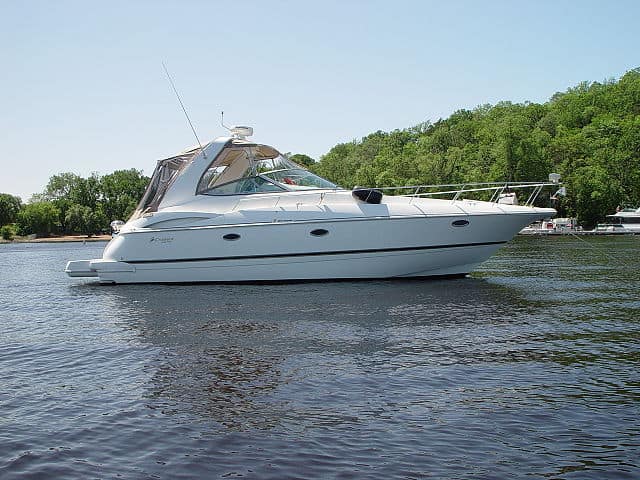
The Cruiser boat class has a wide range of different styles and sizes. The meaning of a cruiser boat is: a cruiser boat is any powerboat with overnight accommodations, a galley, and a range to take you to distant ports. These boats generally have relatively fast cruising speeds and can range anywhere from 30’ on up including over the 100’ plus mega-yacht sizes. Most are powered with diesel inboards, while some smaller ones come with a stern drive option. Here are some different types of cruisers:
Express Cruisers
This category of cruiser boats are comfy boats, with a cockpit aft, a helm deck amidships, and staterooms forward. They come in various shapes and sizes, but they don’t have the elevated, open steering stations found on boats with a flybridge, many modern express cruisers do have opening sunroofs and plenty of windows, so enjoying fresh air, sunshine, and sunsets aboard. is no problem.
Aft Cabin Cruisers
Aft cabin cruisers have a cabin located all the way in the back of the boat for space and privacy. The downside to this design is that it restricts outdoor space on the back of the boat quite a bit, and on some aft cabin cruisers, the flybridge steering station may be the only spot in which you can enjoy some sunshine.
Convertibles
These are cruisers with a flying bridge, which is an open deck on a cabin cruiser located above the bridge on the cabin roof and usually having a duplicate set of navigating equipment. Although many convertibles are designed for saltwater fishing a good number are also designed for simple pleasure cruising. They almost always have a steering station up on the bridge, and many have a second one down below in the cabin. That makes them a good choice for people who expect to be out in all kinds of weather. If you need to pass under low bridges, however, a convertible boat can be a problem due to its height.
CATAMARANS
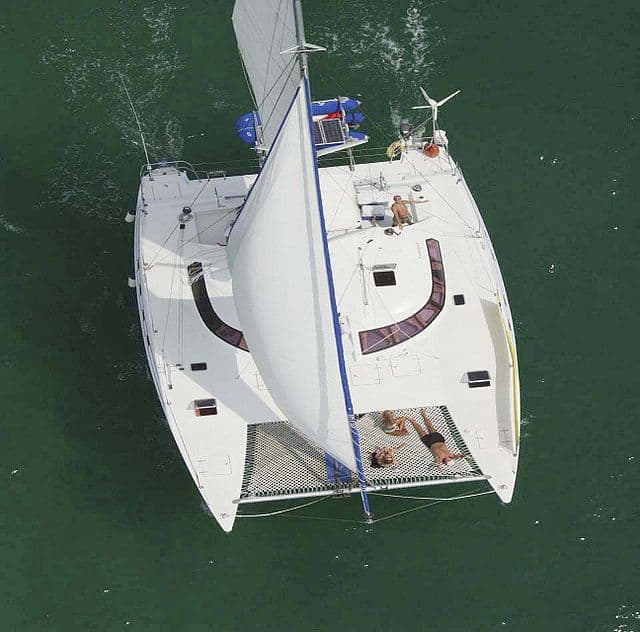
What is so special about a catamaran?
Catamarans are unique as the are much wider and more stable than monohull boats, as they are a multi-hulled boat featuring two parallel hulls of equal size. A catamaran is defined as a boat with two hulls. The term is derived from the Tamil word, kattumaram, which means logs bound together, and the first of these designs were used for fishing. Now a majority of them are sail powered with a small backup engine, but there are some small catamarans that come with dual outboard engines.
The Best Catamarans to sail around the world are in 45 to 50 feet. The smallest catamaran with space for long-term provisions and a cabin is around 30 feet in length, and a 55 to 60-foot catamaran is the largest that can be accommodated at most marinas
There are two basic design types of catamarans: Pontoon and SWATH (Small Waterplane Area Twin Hull). The former is relatively small, and compact and uses floats (known as pontoons) to propel the water along with the dual hulls.
What is a good size catamaran to live on?
Anywhere between 30 and 50 feet in length. The best liveaboard catamarans range in size between 30 and 50 feet in length, 40 feet being the comfortable average. In general, catamarans smaller than 30 feet simply lack the space to include a practical interior layout or storage
SPEEDBOATS
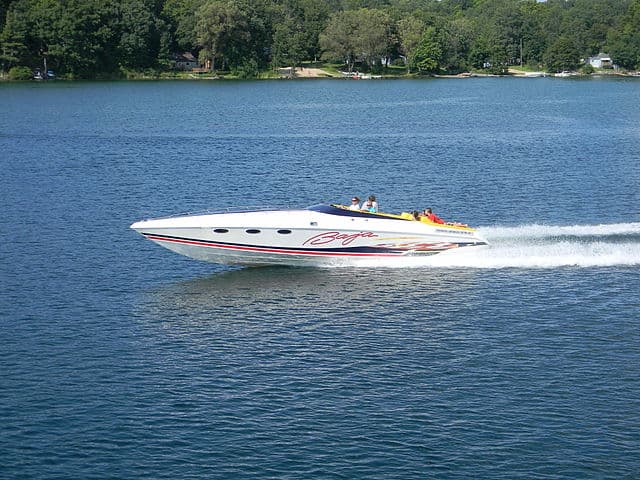
Speed Boats are all about speed, no comfort or quiet, mainly called Cigarette Boats: A cigarette boat or a go-fast boat is a relatively small boat with a long narrow body or platform. Its planning hull is typically designed so that it can attain high speeds on the water. In terms of product brand, the word cigarette refers to the classic brand that builds this type of boat, and can typically range from 28 feet to 48 feet on these boats.
Speed boats are all about speed, fast speeds, so you ask. How fast does a cigarette boat go?
Due to their design, typically being able to reach a max speed of 92mph, cigarette boats were the boat of choice when it came to smuggling. Speed boats do make a lot of sacrifices to squeeze out every possible MPH, they have very small cabins which avoid many accessories to keep weight down, they’re often quite loud, and seating space is limited. If you want to race across the water than a cigarette boat is a great choice.

